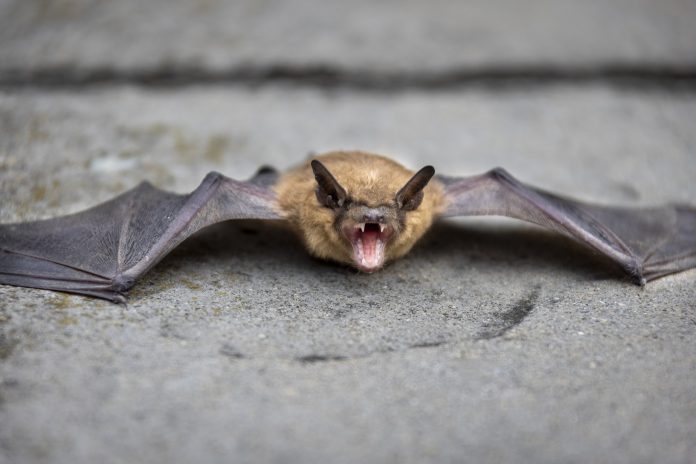Fortune, among other mainstream media outlets, published a story claiming climate change poses a serious threat to bat populations in North America. Bat populations do face a number of threats, but the evidence indicates climate change is not prominent among them. By contrast, green energy projects undertaken to reduce greenhouse gas emissions, and thus the threat of climate change, are directly harming bat populations.
The Fortune story, “Scientists light the bat signal on climate change as study finds 81 of North America’s 154 bats face ‘severe population decline’ over 15 years,” cites a report published by Bat Conservation International (BCI) which estimates that 52 percent of bat species in North America are at risk of populations declining severely in the next 15 years. According to the report and the reporting on it, the decline is due to a variety of factors, most prominent among them when you read the report are habitat loss and roost disturbance, white-nose disease, forest management practices, wind energy development, and climate change.
Not surprisingly, because it provides the mainstream media’s daily dose of climate change alarm, the press focused on climate change as the main factor in bat species’ declines. Yet, BCI’s report provides no evidence climate change is having any direct effect on bats, as opposed to the deaths directly caused by the other factors discussed.
The report vaguely refers to the dangers from extreme temperatures and droughts, but such extreme weather events are natural and have been common throughout history. Bats have evolved and flourished alongside them. There has been no time in history when heat waves, cold spells, and droughts were non-existent in North America. Based solely on flawed computer model projections, the study claims 82 percent of bat species are threatened by climate change. As discussed numerous times at Climate Realism, here and here, for example, climate models are admittedly flawed. By contrast, real world evidence, discussed in Climate at a Glance, indicates that heat waves, droughts, and instances of extreme cold have declined during recent period of modest warming. Data certainly does not support claims that such weather events have been increasing, and, as such, they can’t be causing bat decline.
Concerning the top factor causing bat deaths Fortune writes:
Millions [of bats] have died since 2006 from a fungal disease called white-nose syndrome, which attacks bats when hibernating and creates fuzzy spots on their muzzles and wings. It causes them to wake early from hibernation and sometimes fly outside. They can burn up winter fat stores and eventually starve.
In addition, BCI reports that logging, urban sprawl, and cave exploring have also significantly contributed to the decline of bat species as they destroy or disturb their habitat, and that of the plant and animal species that make up their diet.
In contrast to climate change, there is clear evidence that efforts to reduce greenhouse gas emissions to fight climate change, in the form of the rapid development of industrial wind facilities, is directly causing the deaths of hundreds of thousands, likely soon to be millions, of bats annually. As Fortune describes the situation:
Ironically, wind turbines — a leading source of renewable energy that can help slow climate change — pose another problem for bats. An estimated 500,000, representing 45 species, die each year in collisions with the structures, the report said.
But those figures were based on 2021 calculations, said Frick, an associate research professor in ecology at the University of California at Santa Cruz in addition to her position with Bat Conservation International. So many turbines have been constructed since then that the latest estimate is 880,000 deaths. (link mine)
Industrial wind facilities are constructed where prevailing winds are favorable to relatively constant operation. These are often migration routes for bats and birds, which also typically contain abundant food sources for the bats, be they flowering plants or insects (depending upon the bat species). Species which navigate by sonar flying and feeding among huge arrays of giant, fast-spinning wind turbines is a recipe for death.
This threat that wind power poses to bats is likely to only get worse in the future according to the United States Geological Survey, as increasing numbers of government incentivized turbines are erected. BCI also recognizes the growing problem wind energy development poses to bats, warning:
To help meet electricity demands with renewable sources, wind energy capacity is predicted to increase by more than 500 percent by 2050. In North America, roughly half a million bats die each year from colliding with wind turbines and are most vulnerable during autumnal migration. Experts predict that four bat species will lose more than half of their populations due to collisions with wind turbines in the next 15 years if effective conservation actions are not taken soon.
To sum up, BCI and the mainstream media are correct when they point to disease, habitat loss and disruption, and industrial wind development as significant causes of bat species’ declines. They go off the rail, however, when they try and blame climate change for bat deaths. There are no weather data trends which suggest climate change is making extreme weather events, which can harm bats, more frequent or intense. Accordingly, there is no evidence climate change has or will threaten bat survival in the future.
Blaming climate change for bat decline may make for compelling news and generate more bat conservation funding, but it is not supported by the evidence.























